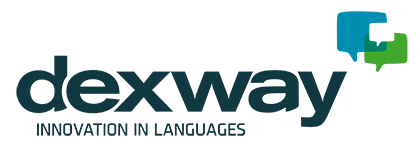In the world of private training, the implementation of new methodologies is essential to stay at the forefront of a mass sector. One of the most effective and versatile approaches to face the challenge of new classrooms is the blended learning methodology. However, when you decide to make the leap from traditional education to implementing blended learning in your centre, it is normal to ask yourself lots of questions at the beginning: What technology do I need? What characteristics should I look for in terms of technical support? How do I implement the new methodologies in the classroom? What do my teachers need to know? etc.

To better understand what blended learning is, we will borrow a definition from International Association of Blended Learning:
Blended learning is an educational approach, which integrates face-to-face classroom practices with online and mobile delivery methods. It aims to provide the learner with a well-planned, managed, and well-structured teacher-facilitated interactive learning environment, where high quality content, activities, and experiences can be customized to learner needs and preferences, unrestricted by time and location.
Implementing blended learning in your language centre can be the catalyst that transforms the educational experience, not only for the students, but also for your teaching staff. This approach combines in-person classes with online resources – thereby offering the flexibility and customization that allows your institution to adapt to the individual needs of its students. The integration of technology allows for more interactive and dynamic learning – making it easier for your students to manage all their commitments as they can establish their own study pace.
The implementation of blended learning not only implies adopting new digital tools, but also embracing new pedagogical strategies that adjust to the demands of modern students. Make it easier for them to deal with schedules, save them time lost in travel, as well as catering to everyone’s digital preferences. Moreover, teaching staff will be able to dedicate more time to practical activities, freeing them up from tedious marking that can be automated, along with other repetitive, mechanical tasks.
The first steps towards implementing a blended learning strategy in class
To get your centre ready for b-learning, let’s take a look at the essential first steps towards a successful and progressive implementation.
#1 Evaluate your technological infrastructure
It is important to analyse what resources you currently have, and which ones would be needed, in order to implement an e-learning strategy in your training centre. Make sure you have the necessary connectivity and devices so that teachers and students can access online resources easily. In addition, staff must be trained with the chosen educational platform if you are to guarantee the effective use of its digital tools.
#2 Design an integrated content plan
The harmonious combination of face-to-face classes (in the classroom or online) and online content is the perfect way to implement effective blended learning. To do this, it is vital to design a content plan that takes advantage of the best of both worlds. First of all, clearly define which topics will be addressed in the face-to-face sessions and which will be available online. By doing this, you can ensure a consistent, comprehensive, experience. As Dexway courses are already organised by objectives, this task is made easier for you.
#3 Choose the best language platform for blended learning
One of the most important decisions you must make on your path to implementing blended learning in your language centre is choosing an appropriate educational platform. Not all platforms are the same. Dexway language course platforms have been designed for language teaching, meaning they offer specific options for this type of training. In addition, Dexway language courses adapt perfectly to the b-learning approach as they are fully interactive, with multimedia content and personalised progress monitoring. Incorporating voice recognition, AI virtual tutor and the establishment of fixed schedules in online class mode, Dexway can be considered the best alternative for training centres and academies seeking to optimise their educational offering.
Reasons to choose Dexway for your training centre
Implementing blended learning in your centre is more than just a trend; it is a necessity if you are to adapt to modern educational challenges. When taking the first steps towards this methodology, choosing the right platform is essential. Dexway language courses not only meet the technical requirements, but also take the educational experience to the next level. Integrate technology, flexibility and personalisation into your training centre with Dexway and experience the hybrid teaching experience.
As previously mentioned, Dexway is the perfect option to help you implement blended learning in your training centre. The language course content and management features that come with the LMS and app allow you to offer your students the experience of studying anytime, anywhere, with real-time statistics.
- Adaptability: Dexway courses adapt to the individual pace of each student, allowing personalised and effective learning.
- Multimedia content: The platform offers high-quality multimedia and interactive content that motivates students and facilitates knowledge retention.
- Personalised tracking: Dexway provides individual and group progress tracking tools, allowing teachers to intervene when necessary to ensure student success.
- Online access: The flexibility of online access allows students to learn anytime, anywhere by facilitating the integration of b-learning via browser, tablet or mobile with the Dexway app.
You may also be interested in:
- The Past, Present and Future of Blended Learning
- 6 benefits of b-learning in language teaching
- Blended Learning for languages: Four Reasons Why it is Effective

